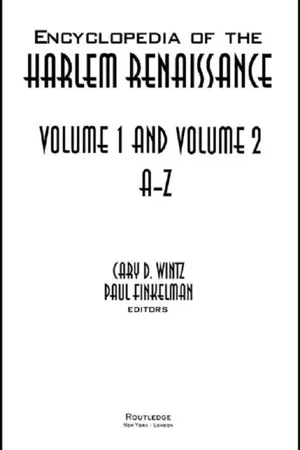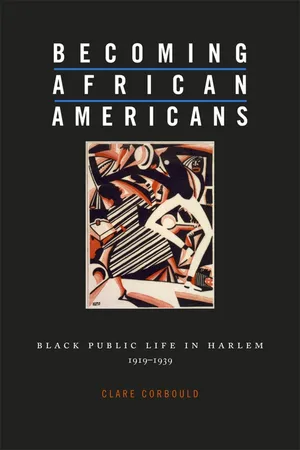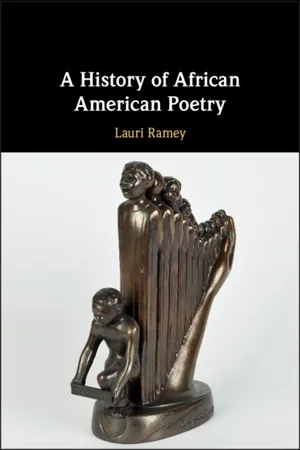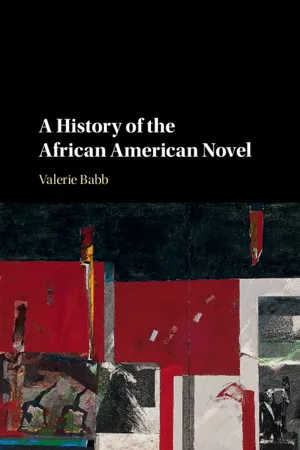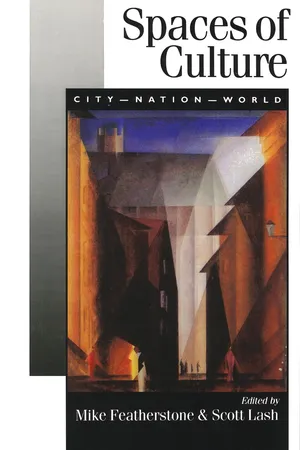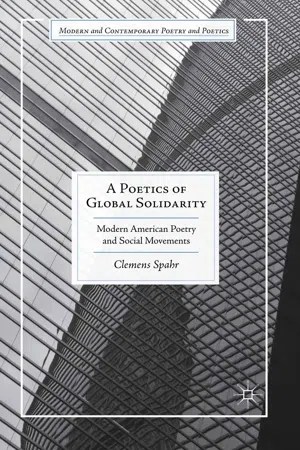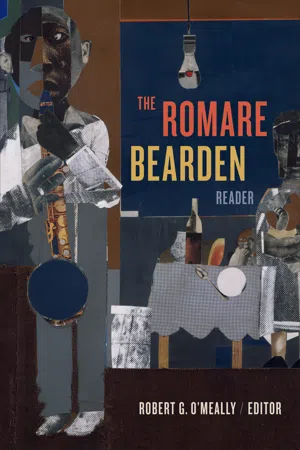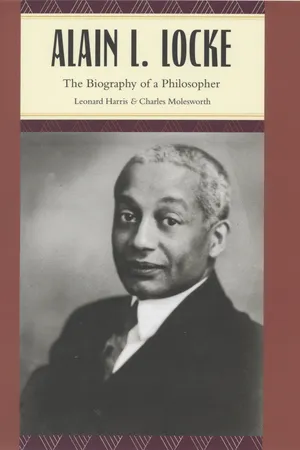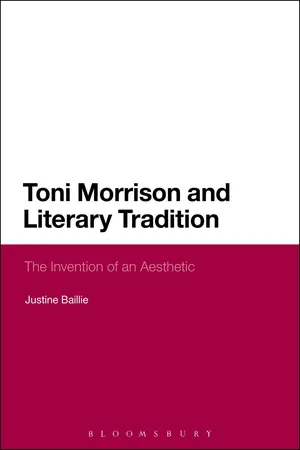History
Harlem Renaissance Art
The Harlem Renaissance was a cultural, social, and artistic explosion that took place in Harlem, New York, during the 1920s. It was a time of great artistic achievement, particularly in literature, music, and visual arts. Harlem Renaissance art reflected the experiences and expressions of African American life, and it played a significant role in shaping the cultural landscape of the United States.
Written by Perlego with AI-assistance
Related key terms
1 of 5
11 Key excerpts on "Harlem Renaissance Art"
- eBook - ePub
- Cary D. Wintz, Paul Finkelman, Cary D. Wintz, Paul Finkelman(Authors)
- 2012(Publication Date)
- Routledge(Publisher)
The visual arts of the Harlem Renaissance have long gone without the renown and attention given to the literature of the period. Indeed, the Harlem Renaissance is most often characterized as a specifically literary phenomenon fueled by racial demographic and cultural shifts from the American South to the North. In fact, the visual arts experienced a distinct and related renaissance beginning in the mid-1920s, inextricably tied to the era's writers and intellectuals, but also rooted in less-developed creative traditions and using an alternative set of inspirational sources. If writers such as Langston Hughes and Zora Neale Hurston were inventing a body of literature that valued black vernacular culture in reaction to a tradition from earlier black writers that had emphasized narratives of tragedy and uplift, then the painters, sculptors, and photographers of the Harlem Renaissance were reacting to a tradition that had been very nearly silent on the subject of black life, even from an earlier generation of black artists. If playwrights and poets of the renaissance mined working-class life for inspiration, visual artists were encouraged to look to African art forms.The visual arts of the Harlem Renaissance—seen in the work of the painters Aaron Douglas, Palmer Hayden, and Hale Woodruff; the sculptors Meta Warrick Fuller and Augusta Savage; and the photographer James Van Der Zee, among others—represents the earliest moment when significant numbers of black artists turned to black life as legitimate subject matter. This fact distinguishes their achievements from those of their writer colleagues whose work followed and built on earlier race-based literary traditions. Moreover, many visual artists attempted to represent African American life through a prism of African-inspired European modernist art in seeking to define a racially identifiable style of art. The task with which these artists were charged was, therefore, a tremendous one: In a vacuum of “positive” black imagery, they were asked to invent a style that paid homage to a legendary ancestral past from Africa while also representing that which was new, modern, folk-based, urban, and above all honored black life. That some of these artists generated controversy, became disillusioned, were later criticized for mediocrity, were forgotten, or left the arts altogether is not surprising. What is surprising is the considerable success they enjoyed and the degree to which their work was embraced and supported. Their successes are an enduring index of how much their work was needed. - eBook - PDF
- Rachel Farebrother, Miriam Thaggert(Authors)
- 2021(Publication Date)
- Cambridge University Press(Publisher)
The period was the first in African American literary history in which artists and writers boldly claimed and exhibited, collectively, a self-confidence in their representa- tion of blackness that would not be replicated until, arguably, the Black Arts Movement of the late 1960s and 1970s. Hughes’s statement, in “The Negro Artist and the Racial Mountain,” that the younger artists “stand on top of the mountain, free within ourselves” 43 – an image that is suggestive of the liberatory possibilities of self-expression – prefigures Black Arts Movement scholar Stephen Henderson’s recognition that poets such as Amiri Baraka and Larry Neal value “the process of self-definition made clearer and sharper” because it could be “raised to the level of revolutionary thought.” 44 For all the emphasis upon failure in early scholarship, the Harlem Renaissance has been, to some extent, a victim of its own success. As Cherene Sherrard-Johnson notes, the Harlem Renaissance is a powerful “brand” that “continues simultaneously to conjoin utopia and lament.” 45 Even so, the romanticized story of the Harlem Renaissance (and the ensuing suspicion of the field that has followed in its wake) has left its imprint on critical interpretations of the period. For one thing, the assumption that publication was an easy feat for the black writer was not correct, as Langston Hughes reminds us: “All of us know that the gay and sparkling life of the so-called Negro Renaissance of the ’20s was not so gay and sparkling beneath the surface as it looked.” 46 Langston Hughes was one of the few Harlem Renaissance writers who managed to make a living as a writer, and the economic precariousness of his position is on full display in The Big Sea, which is animated by a sustained preoccupation with the various ways that a lack of money curtailed artistic experimentation. 47 Such precarity was even more acute for black women writers and artists. - eBook - PDF
Becoming African Americans
Black Public Life in Harlem, 1919–1939
- Clare Corbould(Author)
- 2009(Publication Date)
- Harvard University Press(Publisher)
4 The Artistic Capital of Africa Africa was “poetic capital of the first order” according to Alain Locke, phi-losopher at Howard University in Washington, D.C., and a key promoter of writers and artists during the 1920s and 1930s. 1 The “motherland” certainly preoccupied many of black America’s creative elite, who were the luminar-ies of a cultural movement known at the time as the New Negro Renais-sance or Awakening. These names for the movement—now more com-monly known as the Harlem Renaissance—referred to the hope that the brilliance last seen at the glittering peak of the Ethiopian and Egyptian civi-lizations would shine once again. Protagonists and lesser lights felt that they were in the middle of something special, with their profiles high due to America’s burgeoning culture of celebrity combined with the emergence of black urban centers. They were buoyed along by support for black writers at new publishing houses in New York, an expanding print media in Harlem and other cities, and an interest in African art not only in black creative circles but in modernist painting and sculpture more generally. The New Negro Renaissance spanned roughly the years from 1919 to 1935, though its start, finish, and high points differ depending on whether the emphasis is on literature, visual arts, stage productions, or music. It was made possible by the same confluence of events and ideas that gave new li-cense to black public life in general, with a few additional conditions unique to New York. The willingness of black Southerners and migrants from the Caribbean to pick up and move, combined with white Northerners’ distaste for mixed neighborhoods, resulted in the formation of ever more crowded black areas in all major Northern cities. Harlem, with its sweeping wide boulevards and well-maintained brownstone buildings, was one such com-munity. Not yet the ghetto it would famously become, Harlem afforded - eBook - PDF
- Lauri Ramey(Author)
- 2019(Publication Date)
- Cambridge University Press(Publisher)
1, p. 1324. 138 A History of African American Poetry opening pages of The Cambridge Companion to the Harlem Renaissance. 12 Another helpful chronology is found in The Harlem Renaissance: Hub of African-American Culture, 1920–1930, whose title delineates the years of the movement according to author Steven Watson. 13 A very brief chro- nology closes The Harlem Renaissance: A Brief History with Documents, edited by Ferguson, which begins with the start of World War I and ends with the publication in 1939 of “The Negro: ‘New’ or ‘Newer’” in Opportunity, with Locke’s The New Negro in 1925 as a near-midpoint. This volume opens with a concise but useful summary of major figures and publications of the Harlem Renaissance. 14 In The Music of Black Americans, musicologist Eileen Southern also looks ahead to embed the Harlem Renaissance in a larger period of changes taking place from 1920 to 1996. Alternately using the designa- tions of the Black Renaissance and the New Negro Movement, Southern describes the primary manifestation as literary but with explosive impact on all art forms, the re-creation of new kinds of theatrical and musical productions, the breaking down of artistic boundaries, and cross-arts interchange. Southern accepts James Weldon Johnson’s “informal inau- guration” of the period in 1917, with the publication of his Fifty Years and Other Poems commemorating the fifty years since the Emancipation Proclamation. - eBook - PDF
- Valerie Babb(Author)
- 2017(Publication Date)
- Cambridge University Press(Publisher)
Fiercely proud of all that is entailed in being black, he and his peers – both male and female – have found their black identity and with it an inner strength which rules out forever a return to that traditional brand of race relations that characterized lives of their elders” (4). One cannot help but hear overtones of the New Negro movement in Ebony’s description of the time and thinking, as did Henry Louis Gates that this constituted another black renaissance: The third renaissance was the Black Arts Movement, which extended from the mid-’60s to the early ‘70s. Defining itself against the Harlem Renaissance and deeply rooted in black cultural nationalism, the Black Arts writers Black Arts and Beyond: 1960s–1970s 125 125 imagined themselves as the artistic wing of the Black Power movement. Amiri Baraka, Larry Neal and Sonia Sanchez viewed black art as a matter less of aesthetics than of protest; its function was to serve the political libera- tion of black people from white racism. Erected on a shifting foundation of revolutionary politics, this “renaissance” was the most short-lived of all. By 1975, with the Black Arts Movement dead, black culture seemed to be undergoing a profound identity crisis. (“Black Creativity” 74) Writers of the period might well be called the newest of the New Negroes, but Gates sells short the artistry and influence of their works. While many exhibited a stridency of tone and mission, the attention paid to their polit- ical content often eclipsed consideration of their craft. 3 Certainly phrases such as “whitey,” “the man,” or “ofay,” conveyed outrage, but this body of writing was more than the angry literature of an angry time. Painting the novels with the broad stroke “black nationalist” elided their many inven- tive distinctions. Not always receiving their due are the rigor of craft, the invention of language, the juxtaposing of imagery, the aesthetic reimagin- ing of history, and the resituating of the art–politics debate. - eBook - PDF
We Ain’t What We Ought To Be
The Black Freedom Struggle from Emancipation to Obama
- Stephen Tuck(Author)
- 2011(Publication Date)
- Belknap Press(Publisher)
It was a “magnificent assemblage,” said Johnson, again a mixture—as some put it—of “Negrotarians and Niggerati.” The bril-R E N A I S S A N C E I N H A R L E M , D A R K A G E S E L S E W H E R E , 1 9 2 4 – 1 9 4 1 1 7 1 liant young poet Langston Hughes won first prize for The Weary Blues. The publisher Alfred Knopf snapped him up. Years later Johnson re-flected on the awards dinner: “It was intended as the beginning of some-thing and so it was.” 6 The Harlem—or as some called it, the New Ne-gro—Renaissance was born. In fact, the Renaissance was rather less geographically restricted and less original than its names might suggest. Writers came and went, and there were outposts in Washington, Philadelphia, Atlanta, and even Eu-rope. Cooper, Washington, Du Bois, and many others had previously written to critical acclaim. What was new, though, was that the Harlem sponsors of the Renaissance saw black literature as an integral part of the struggle for black equality. As James Weldon Johnson explained in the preface to his 1922 Anthology of Negro Poetry, “No people that has pro-duced great literature . . . has ever been looked upon by the world as dis-tinctly inferior.” What he called the “art approach to the Negro prob-lem” combined various protest ideologies with an added literary twist. 7 Black Americans would gain rights once they had proved their worth. The talented would take the lead. But now, they would fight with the pen. With hindsight, such optimism appears naive, even bizarre. But for Harlem’s literary lords, it seemed perfectly reasonable. Irish nationalism had been marked by a literary renaissance. C. S. Johnson believed litera-ture was “the soft spot . . . in the armor of the nation.” 8 After the any-thing-but-Great War, and taking heed of Freud’s warning that a sup-pressed id led to neurosis, modernist writers worried that white culture tottered on the edge of a nervous breakdown. - eBook - PDF
Spaces of Culture
City, Nation, World
- Mike Featherstone, Scott Lash, Mike Featherstone, Scott Lash(Authors)
- 1999(Publication Date)
- SAGE Publications Ltd(Publisher)
(From Huggins, 1995: 300) 1 2 The two sides of this process are not often discussed together. The activists in the Renaissance tended to glorify the cultural possibilities and downplay or even ignore, except as it became a basis for their literature or art, the poverty and the overcrowding that also characterized Harlem in the late 1920s. Black Metropolis is also the title of the classic study of Chicago by St Clair Drake and Horace Clayton from 1945. Jon Michael Spenser (1993: 1 09ff.) discusses this book in relation to the blues. 1 3 From the point of view of current social movement theory, whether we interpret the Harlem Renaissance as a cultural movement or as a political movement depends to a great extent on our theory of social change and the meanings we attribute to culture and politics. If we conceive of change in terms of an abrupt rupture which results, at least to an important extent, from the conscious efforts of organized, 'politically ' motivated groups, then the Harlem Renaissance will appear as a 'cultural ' movement, with little or no transformative effect on politics (the state). From this perspective, which is probably the dominant one regarding the Harlem Renaissance, some of that movement's key actors, the poet Langston Hughes for example, became 'political ' in the early 1930s when they associated with the Communist Party, and only after the 'cultural ' movement had waned (Cruse, 1967; and Huggins, 1995, discuss these issues). From this perspective also, the 'cultural ' movement that was the Harlem Renaissance, delayed or even prevented a 'political ' movement from emerging among African-Americans during the heyday of the late 1920s. Seen from a more traditional perspective, especially from the point of view of the Marxist theory dominant at the time, focusing creative energy on 'culture ' tended to divert attention from 'politics ', unless that is, this 'culture ' had a clear political message. - eBook - PDF
A Poetics of Global Solidarity
Modern American Poetry and Social Movements
- Clemens Spahr(Author)
- 2015(Publication Date)
- Palgrave Macmillan(Publisher)
Even those writers who sought to avoid references to race were perceived as African American writers and thus shared in discussions about the social position of the African American artist. But the institutional context that frequently confronted them with racial discrimination also propelled them beyond concerns with that single question. Many of the writers of the Harlem Renaissance exhibited an enduring commitment to imagining a global poetic subjec- tivity beyond the modern world-system’s mechanisms of exclusion. In this context, it is necessary to take seriously William Maxwell’s claim that “[t]he history of African-American letters cannot be unraveled from the his- tory of American Communism without damage to both” ( New Negro, Old Left 2). Harlem Renaissance writers read their poetry at the same venues, and published in the same journals, as figures of the literary left such as Giovannitti, Rolfe, and Rukeyser. They were involved in political activism from revolutionary movements to women’s struggle against the confining space of the household, “the primary socializing agencies of the world-sys- tem” (Wallerstein, World-Systems Analysis 37). It is therefore necessary to ask what these political and cultural affiliations meant for the poetic production of the time, and how the poetry of the Harlem Renaissance imagined an active role for African American culture in the context of the antisystemic global struggles of the 1920s and 1930s. Barbara Foley has demonstrated that in the post–World War I era, the “term New Negro signified a fighter against both racism and capitalism” (Foley, Spectres of 1919 31). According to Foley, this impulse soon gave way to a cultural nationalism inherent in racial and radical thought at the time, and thus the postwar “New Negro class struggle warrior” deteriorated into the “culture hero of the Harlem Renaissance” in the 1920s (71). - eBook - PDF
- Robert G. O'Meally(Author)
- 2019(Publication Date)
- Duke University Press Books(Publisher)
While it seems very ironical that this should occur during the coun-try’s worst economic depression, the aid was a boon to all artists. But to Black artists, it was of marked importance. Black artists were able to work at their craft, with materials and other facili-ties provided, and paid for doing so. They explored various technical methods of painting, sculpture, and printmaking. They learned all the various procedures and problems, as an instance, for preparing a large mural. Artists came together and exchanged ideas and experiences. Aside from the salary, very few Black art-ists could have afforded the practical schooling provided on the projects alone. THE 1930S AN ART REMINISCENCE Romare Bearden The 1930s: An Art Reminiscence 157 In former times Black artists had more or less worked in isolation from one another. Joshua Johnston, a portrait painter of the Colonial era, lived in Balti-more and considering the restrictive laws that ordained the behavior of Black people in that city and state, it is amazing how he was able to learn his craft and pursue his career. Three mid-nineteenth-century artists — Robert Duncanson of Cincinnati, an excellent landscape painter; Edward Bannister of Providence, who won a medal at the great Philadelphia Centennial Exposition of 1876; and Edmonia Lewis, who attended Oberlin and did most of her sculptures in Rome — apparently did not even know of each other. One of the reasons that Henry O. Tanner, the first Afro-American artist to gain international recognition, remained in Paris is because he enjoyed a com-munion with artists there he could not find in his own country. During the 1920s, the so-called period of the Harlem Renaissance, New York was a magnet for such well-known artists of the time as Richmond Barthé, Palmer Hayden, Malvin Gray Johnson, William H. Johnson, and Augusta Savage. However, there was little contact between them. - eBook - PDF
Alain L. Locke
The Biography of a Philosopher
- Leonard Harris, Charles Molesworth(Authors)
- 2010(Publication Date)
- University of Chicago Press(Publisher)
The Renaissance and the New Negro 181 for Harlem, the philosopher is speaking to it, rousing it to agreement, mov-ing it beyond the imposed category of a ghetto into the status of a capital. The cultural effect of the anthology called The New Negro ramified in the wake of the consciousness and idiom that had been fostered by modernist culture. As Locke put it, again in the “Foreword,” “we have . . . concentrated on self-expression and the forces and motives of self-determination.” 2 Open-ness, autonomy, newness, experimentation, the ability to think and experi-ence across and beyond boundaries of genres and disciplines: all these as-pects were already part of Locke’s writings and thought in the ten or more years since he began at Howard. Harlem was at once the metaphor and the evidence for Locke’s modernist declaration. The social energies of the new race capital were vibrant and complex. Mi-gration to northern urban centers by southern blacks on a large scale in the first two decades of the new century was fueled by poor conditions in the South and a severe labor shortage up North. A week’s wages for female do-mestics in the Deep South, for example, could be earned in a day in Manhat-tan. Between 1910 and 1930, the black population in New York City increased two and a half times, from ninety thousand to over three hundred and twenty-five thousand. A building bust in Harlem, first developed for pros-perous whites, made vacant housing there suddenly available and affordable in the early 1910s, and blacks poured out of the Manhattan slums known as Tenderloin and San Juan Hill to occupy newly built and spacious apartments and houses above 125th Street. Harlem itself had over 100,000 citizens in the signal year of 1925, and the population was over 95 percent black. Much of the rental property was still owned by white developers, and the community was less than successful in creating a sustaining entrepreneurial class. - eBook - PDF
Toni Morrison and Literary Tradition
The Invention of an Aesthetic
- Justine Baillie(Author)
- 2013(Publication Date)
- Bloomsbury Academic(Publisher)
Most notable among these was the journal, The Seven Arts , concerned with developing a new polyglot, self-determining American culture by fostering the ‘native’ modernism of white writers Van Vechten, Marianne Moore and Sherwood Anderson and black writers like Toomer and Claude McKay. Hutchinson concedes that the radicalism associated with The Seven Arts was not entirely free of racism, but concludes: ‘If Greenwich Village cultural nationalists shared certain stereotypical images of Africa with Eliot, they evaluated them in a radically opposed manner, one that affiliated them with the African-American writers of Harlem more than with their white compatriots in London’ (Hutchinson, 1995, p. 97). Hutchinson also associates both black and white non-canonical modernism with the wider philosophical and anthropological work of key figures such as William James and Franz Boas. The pragmatism and cultural pluralism of James and others is related by Hutchinson to a ‘low’ modernism, or a form of ‘critical realism’, that characterizes much of the Harlem Renaissance literature and helps to explain why it has come to be seen as modernist. Even the formal experiments of Harlem Renaissance authors are most often attempts to incorporate folk forms into poetry or fiction, or to bend generic conventions from Western literary tradition to their own uses, while the so-called bourgeois writers such as Larsen and Fauset were unabashedly ‘realistic’, in an 7 Examples of the novels that Du Bois particularly objected to are: Carl Van Vechten’s Nigger Heaven (1926); Julia Peterkin’s Black April (1927) and Claude McKay’s Home to Harlem (1928). Toni Morrison and Literary Tradition 28 almost old-fashioned sense, except for the nature of their subject matter and the people to whom they gave voice.
Index pages curate the most relevant extracts from our library of academic textbooks. They’ve been created using an in-house natural language model (NLM), each adding context and meaning to key research topics.
